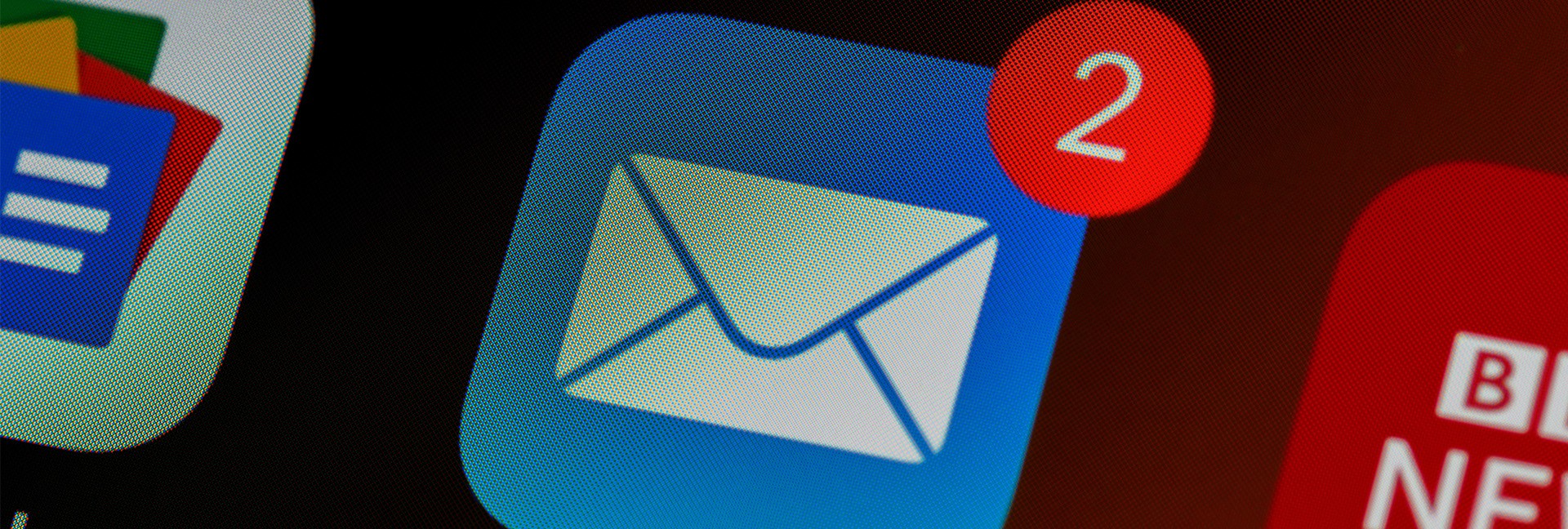Personalized appeal. Exclusivity. Urgency. What will make a person stop and open an email? Solving this important riddle does not have an easy, one-size-fits-all answer. However, there are ways to go about increasing your audience’s rate of email interaction.
Here is a look on boosting email marketing engagement and how to keep your subscribers from leaving.
What Is Email Marketing Engagement?
Simply put, it’s a measure of how people, mainly subscribers and those within an email list, interact with the email campaigns you send. What metrics are used to calculate this “measurement?” The most common are open rate, click rate and conversion rate.
Open Rate
Open rate refers to the proportion of emails being opened by your audience. Choosing to open one email over another depends on many factors, but arguably the biggest is the subject line. Typically, people will prioritize the emails they open if they know who or where it’s from and what it’s about. Having a clear and concise “from” line can increase open rate and help assure customers the email isn’t a phishing attempt.
Why do consumers choose to leave emails as unopened? Surveys from consumers revealed the main reasons behind unopened emails are that they lack relevance, the customers received too many, they don’t recognize the sender, and they already received the reward they signed up to get initially.
Click Rate
Click rate, or click-through rate, is the ratio of people who click on at least one link within the email message. A click-through could come from email recipients following a link to a latest product, a news article or whatever message you’re utilizing to potentially engage the audience.
This form of success measurement can be found by dividing the number of click-throughs by the number of delivered emails. Then, the ratio is multiplied by 100 to calculate your email “CTR” percentage. Not only is this used for measuring the effectiveness of email campaigns, but for the CTR for a specific page or an advertisement campaign’s throughput as well.
Conversion Rate
One of the best means of determining the effectiveness of your marketing efforts is a high conversion rate. Conversions refer to a response by the consumer to a call of action or some form of goal activity. In email marketing, this can range from opening the email to creating an account or all the way to purchasing the linked product.
A conversion rate is established by comparing the number of users who “converted” to the number of emails sent — with a good rate falling between 2% and 5%. Understanding this can give insight into what’s working as far as content in the email marketing as well as determining a return on investment.
Measuring Success
Success is different for everyone. When calculating the rates and ratios of your email engagement, it’s important to keep in mind which customer responses are the most valuable to you. It’s also about using these numbers to identify areas of improvement.
While making changes, be sure to keep your audience at the center of your efforts. From sending surprises to sharing great experiences, you can work on building a brand with positive, dynamic content they look forward to seeing in their inbox. When interest starts to wane, it will be time to focus on re-engagement strategies or trim them from the list to keep it optimal.
Helpful Tips for Improving Email Engagement
As the most effective means of reaching existing and potential customers, email communication can deliver new product notifications, personalized content and more right to your audience.
Yet, every day, millions of these emails will go unnoticed and unread. How can you make sure your email is not among the unseen?
Below are some handy tricks to get those coveted clicks and conversions:
- Identify yourself and clarify your role. Ensuring your audience understands from whom they’re hearing and the reason for the message is essential in getting more engagement. Start by developing powerful subject lines, but keep them short. It’s advised to go a step beyond by making the correspondence more personal — therefore, meaningful. How? One method is to customize the “from” name instead of using an email address. Having a first name and the name of the company can go a long way in building rapport before the recipient even opens the email. This step can help you connect better simply by being more human.
- Know your target before taking aim. Don’t expect a response from someone when the message doesn’t speak to the individual in the first place. Employ specific segments of information to better personalize the email. Segmented data can be derived from demographics, site-tracking and behaviors such as link clicks. Target individuals with exciting content designed to appeal to these behaviors and their interests. Utilizing segmentation to get the information you need can not only reveal more about who they are, but potentially more about what they want and how you can give it to them.
- Personalize the message. Sending a message tailored specifically for the intended recipient is among the top email marketing practices. Why? Because 75% of consumers report they have a higher tendency to purchase from a brand employing such personalized content. One trusted route is to recognize and celebrate recipients’ achievements. Take advantage of a birthday or subscription anniversary to engage with them on a personal level. Include their name at the top and other unique facets.
- Movement can equal attention. With all the emails flooding a person’s inbox, it’s easy to get overlooked. What’s one way to stand out from the crowd? Moving pictures, known as GIFs, are great for boosting conversion rates. The animation can provide a visual cue and the imagery can invoke an emotional component. Plus, GIFs are simple to implement.
- Utilize data as social proof. Effective and informative, social proof is the psychological effect of being more trusting of something if others have done it. Essentially, it’s based on the idea of there being safety in numbers. Padding your email, or even the subject line, with hard data showing others have given it a shot can be very persuasive to the human psyche. Testimonials can work the same way. Research shows positive product reviews are oftentimes more trusted than copy and sale descriptions. Consider enhancing the email to make it more along the lines of storytelling by adding a short testimonial or review. As an extra move, you can personalize your email signature by including links to positive reviews or social media profiles that showcase customer satisfaction, adding to your credibility.
- Give them what they want. Reward-based targeting works well when paired with useful information about a product, the company or the recipient. Through segmentation, you can extend insight into recipients’ shopping patterns, a product they previously searched, and other personally targeted details regarding something they value. When combined with the incentive — such as a giveaway or discount code — these dynamic emails are great at piquing someone’s interest as well as retaining subscriptions.
- Offer help, not just a sale. Increasing user engagement metrics isn’t only about pushing a sale or offering a discount. Frequently, engagement can be found in sending something of use to the individual. For instance, cart abandonment emails have high rates of clicks leading back to a website. Along the same lines are refill and appointment reminders. These notifications have the same goal of selling something, but they’re also advantageous to the reader.
Next Steps
Formulating successful email marketing campaigns to keep people engaged isn’t easy —especially with the ever-increasing amount of competition for attention. It’s important to remember it’s a long-term investment. Providing fresh, engaging experiences is key — whether it’s the smallest of businesses or the largest corporations.
Start by better understanding the people within your audience, treating them as individuals and working to give them what they want. Once you begin to see them as more than just numbers and treat them so, you might see subscribers transform into lifelong brand advocates.
Cover Image: Unsplash, Brett Jordan
Author Bio
Aaron Wittersheim is Chief Operating Officer at Straight North, an Internet marketing agency. He has helped startups, middle-market firms and Fortune 500 companies improve organizational structure and grow through his expertise in process conception, task automation and internal project management.












